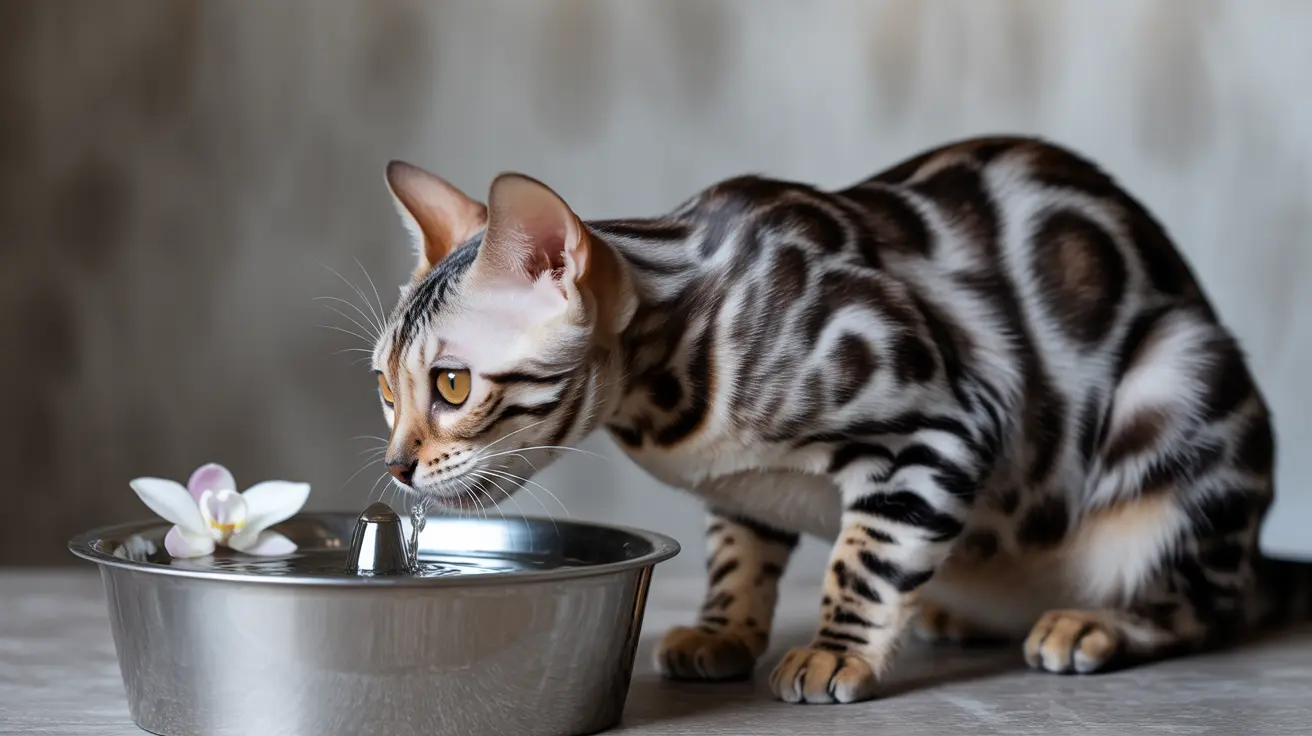As a cat owner, ensuring your feline friend stays properly hydrated is crucial for their health. While tap water is readily available, many pet parents wonder about its safety for their cats. Let's explore the facts about tap water consumption for cats and what you need to know to keep your pet healthy and hydrated.
Understanding the safety of tap water for cats involves considering several factors, including water quality, regional differences, and your cat's individual health needs. This comprehensive guide will help you make informed decisions about your cat's drinking water.
Understanding Tap Water Safety for Cats
Most municipal tap water in the United States is treated to meet EPA standards, making it generally safe for both humans and cats. However, cats can be more sensitive to certain contaminants due to their smaller size and unique physiology.
Common tap water additives like chlorine and fluoride, while safe in regulated amounts, may affect some cats more than others. Additionally, older plumbing systems can introduce metals like lead and copper into the water supply, potentially causing health issues for your feline companion.
Regional Water Quality and Its Impact
Water quality varies significantly depending on your location. Urban areas typically have strictly regulated water treatment systems, while rural locations might rely on well water that requires additional testing and monitoring.
To ensure your tap water is safe for your cat, you can request a Consumer Confidence Report from your local water utility. This report details the presence of various minerals, chemicals, and potential contaminants in your water supply.
Health Considerations for Cats
Cats with certain health conditions may be more sensitive to tap water contents. Those with kidney issues, compromised immune systems, or sensitive digestive tracts might benefit from filtered water options.
Signs that your cat may be sensitive to tap water include:
- Increased thirst
- Changes in urination patterns
- Gastrointestinal upset
- Reluctance to drink water
Alternative Water Sources
If you're concerned about tap water quality, several alternatives are available:
Filtered Water
Home water filtration systems can remove chlorine, heavy metals, and other potential contaminants. Carbon filters and reverse osmosis systems are particularly effective at providing clean water for your cat.
Pet Water Fountains
Many cats prefer running water, making pet fountains an excellent choice. These often include built-in filters and encourage increased water consumption through movement and oxygenation.
Best Practices for Cat Hydration
Regardless of your water source, following these practices helps ensure your cat stays properly hydrated:
- Clean water bowls daily
- Provide multiple water stations throughout your home
- Change water at least once daily
- Monitor your cat's drinking habits
- Consider wet food to increase moisture intake
Frequently Asked Questions
Is tap water safe for cats to drink, and what contaminants should I be aware of?
Tap water is generally safe for cats in most areas, but potential contaminants include chlorine, fluoride, heavy metals, and bacteria. The safety largely depends on your local water quality and treatment processes.
How does the quality of tap water vary by region, and how can I check if my area's water is safe for my cat?
Water quality varies based on local treatment facilities, infrastructure age, and source water. Request a Consumer Confidence Report from your local water utility or have your water independently tested to verify its safety.
What are the health risks for cats drinking tap water containing chlorine, heavy metals, or hard minerals?
Excessive chlorine can cause digestive issues, while heavy metals may lead to long-term health problems. Hard water minerals generally aren't harmful but might contribute to urinary tract issues in sensitive cats.
Should I use filtered or bottled water instead of tap water to keep my cat healthy?
Filtered water is a good option if you're concerned about tap water quality. While bottled water is safe, it's not necessarily superior to filtered tap water and creates environmental waste.
How can I encourage my cat to drink more water, and what are best practices for providing fresh, safe water?
Use pet fountains, provide multiple water sources, keep bowls clean, and change water daily. Some cats prefer wide, shallow bowls that don't touch their whiskers while drinking.
Conclusion
While tap water is generally safe for cats in most areas, understanding your local water quality and your cat's specific needs is essential. When in doubt, filtered water provides an extra layer of safety, and proper hydration practices help ensure your cat's long-term health and well-being.






